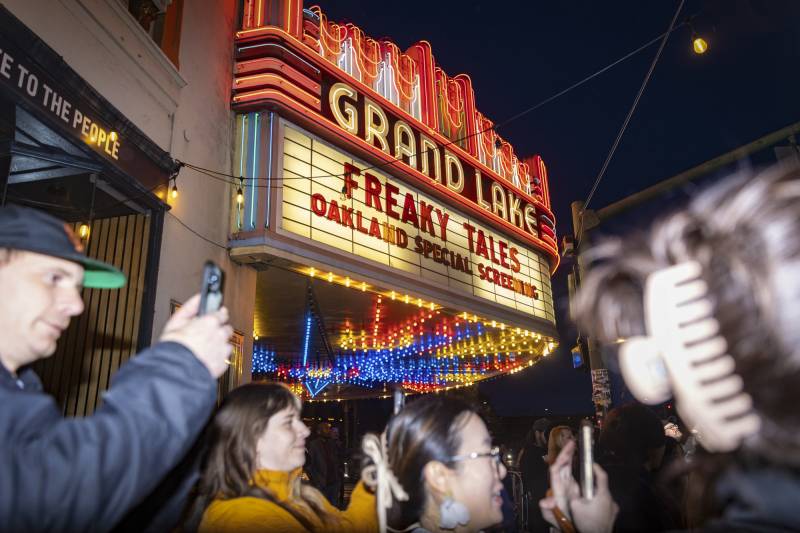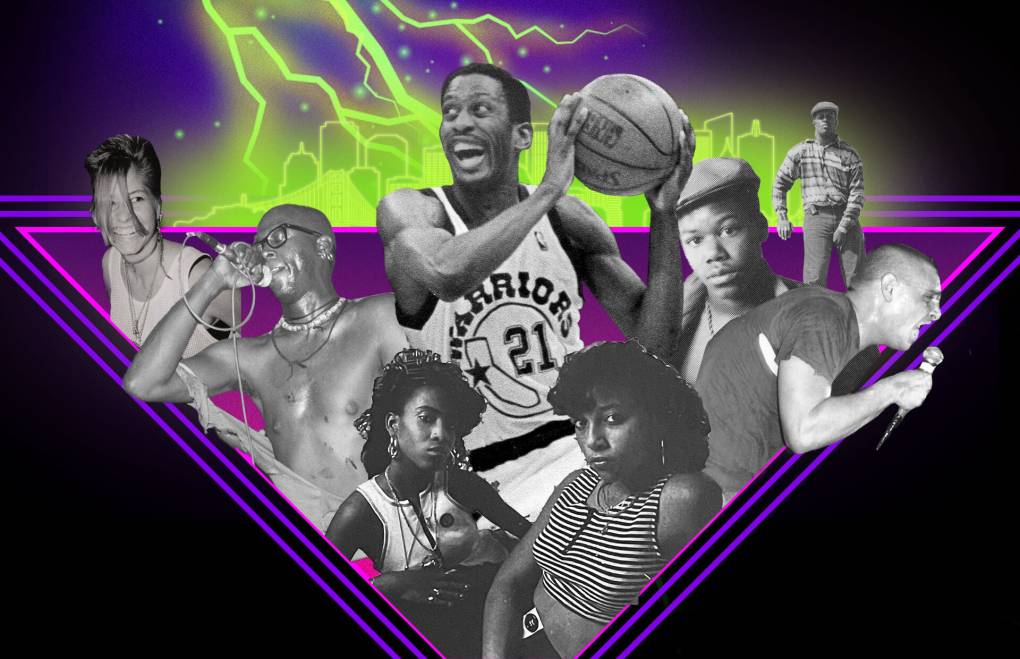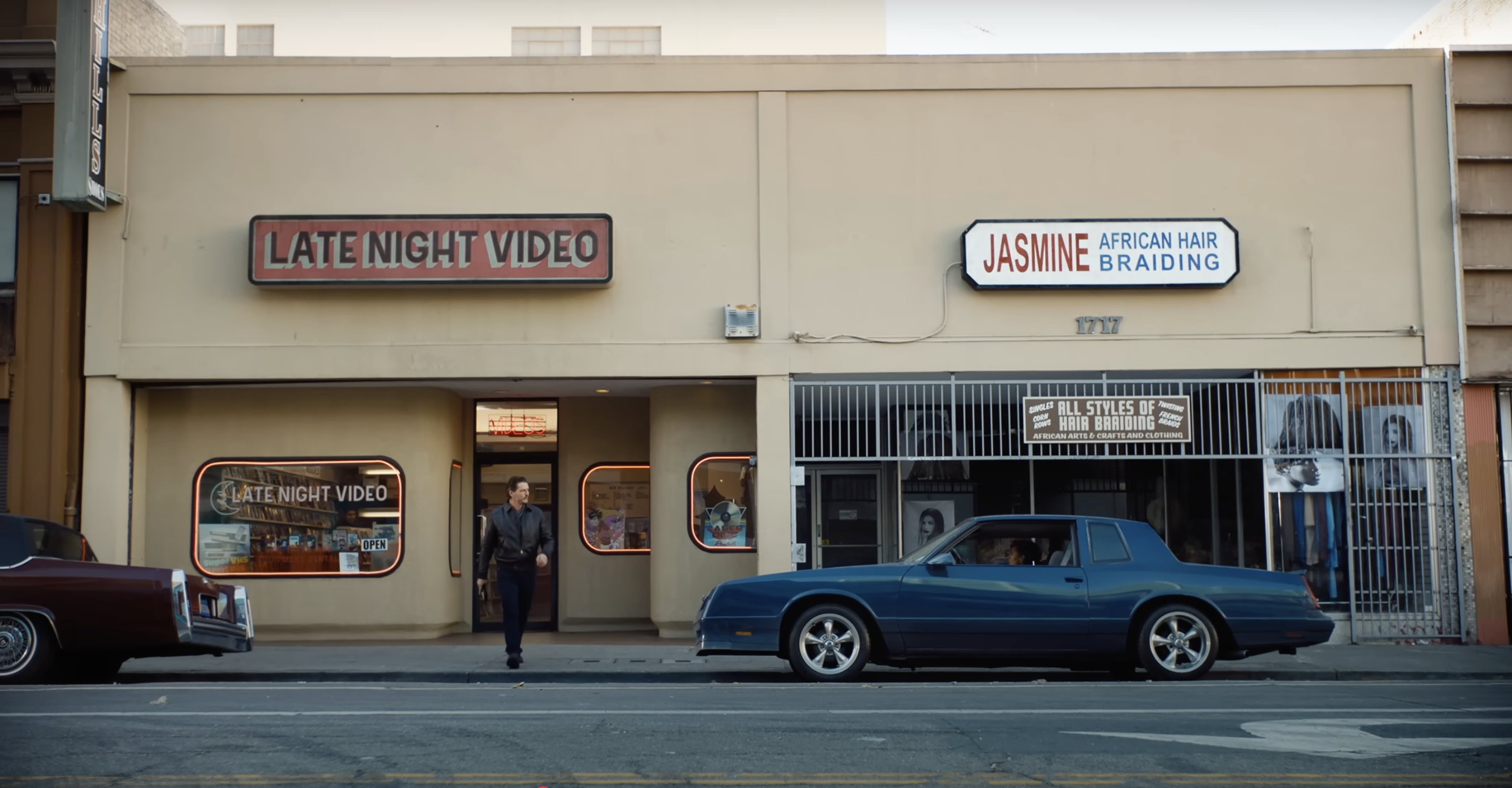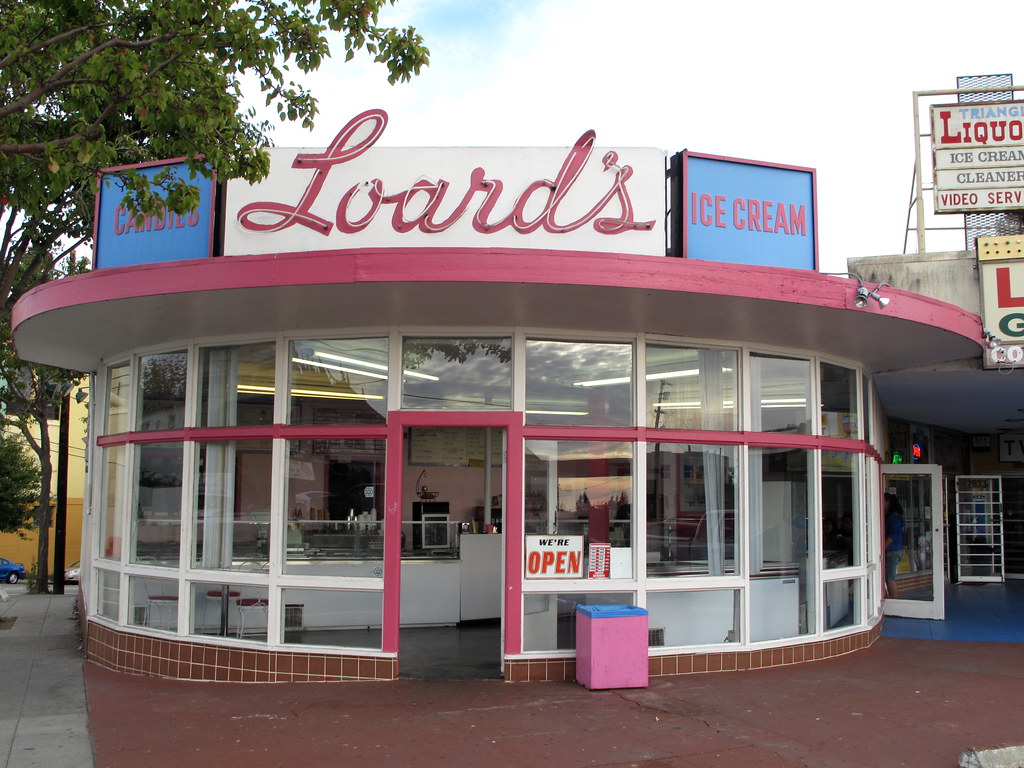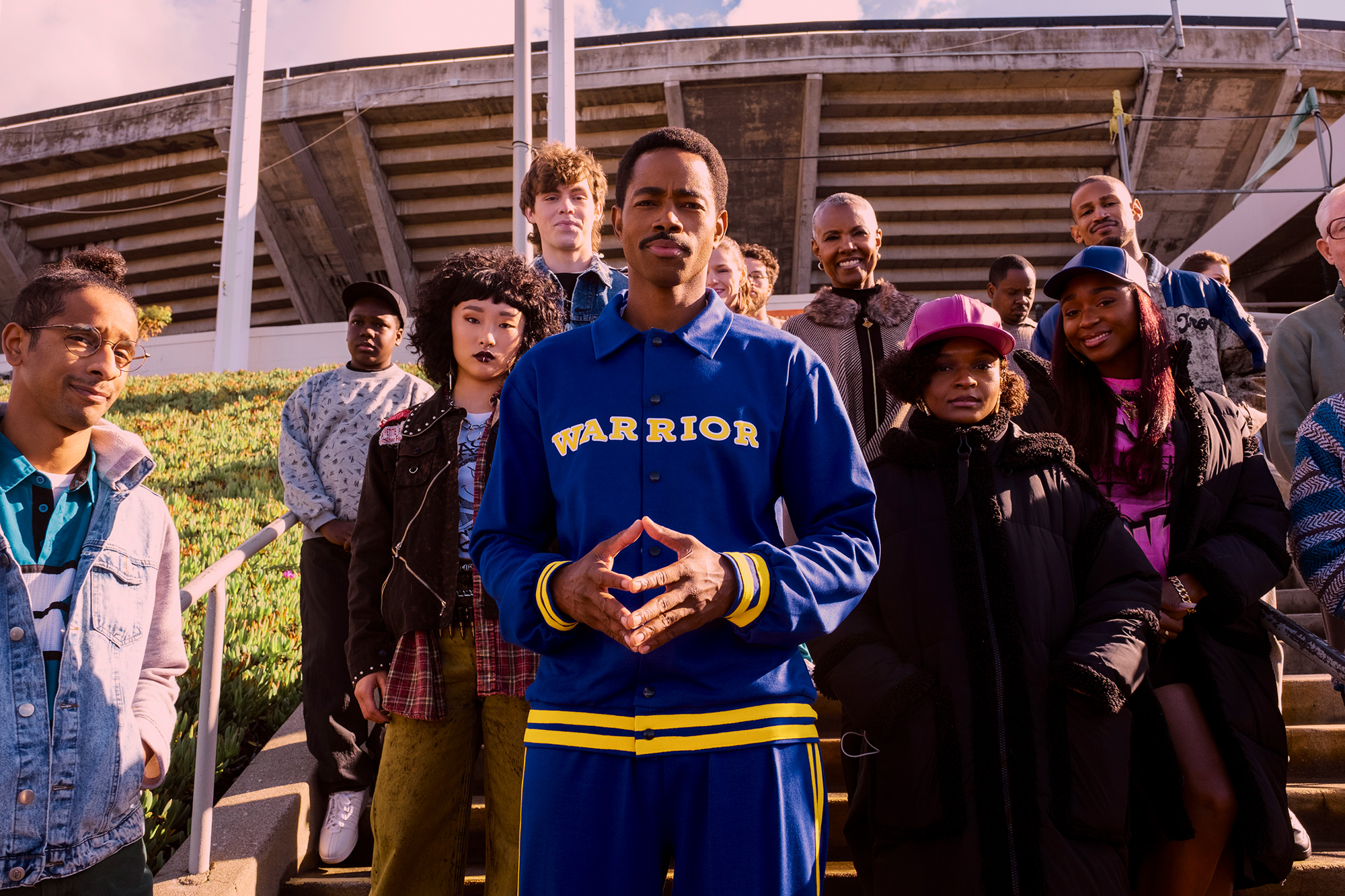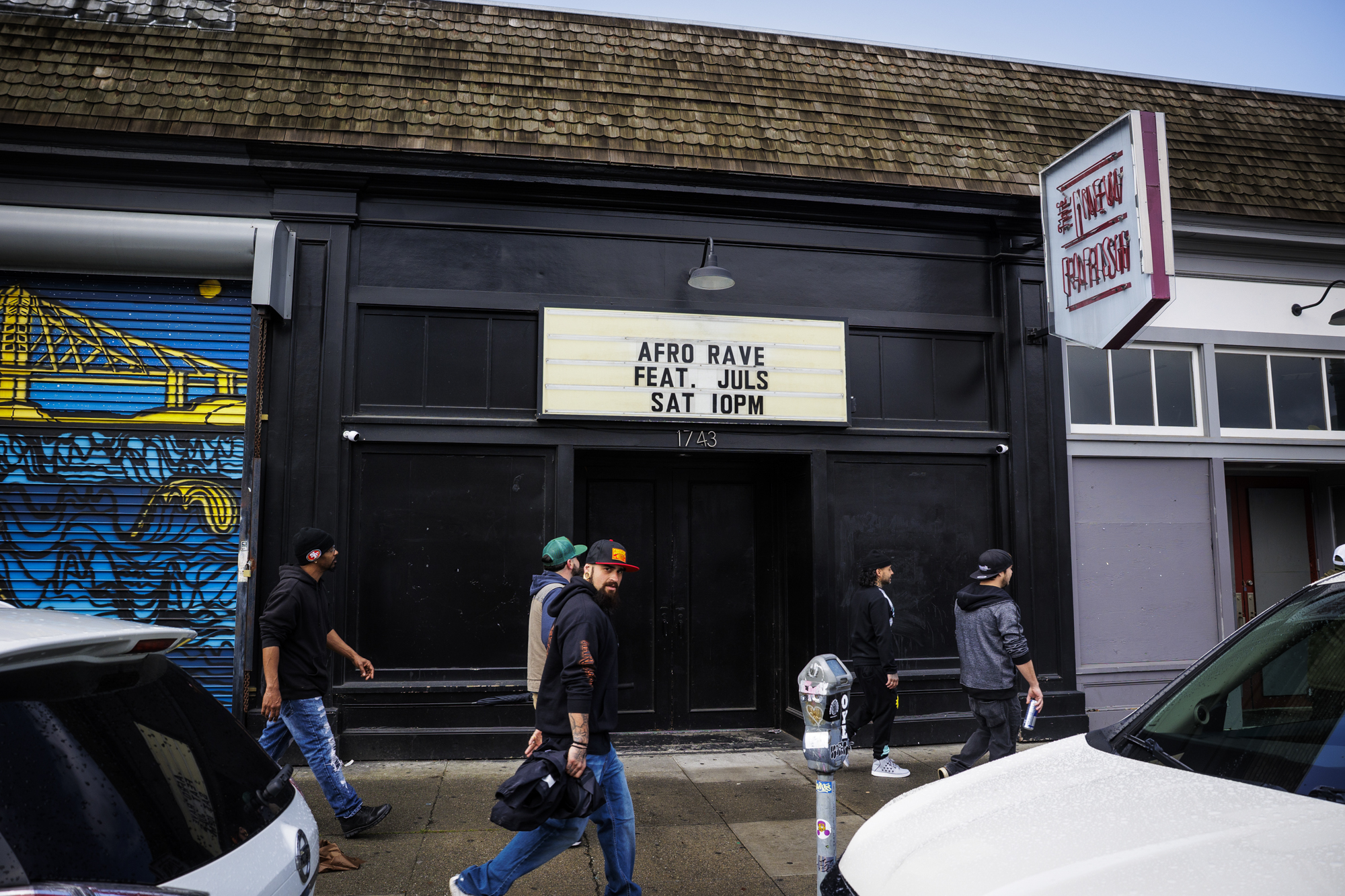The new Pedro Pascal movie Freaky Tales is a wild, over-the-top love letter to Oakland. It involves four interconnected stories, most of which actually happened in the East Bay in 1987. And it’s packed with landmarks, cameos and easter eggs for Oakland locals.
Here, then, are 27 local references and hidden details in Freaky Tales, listed from A to Z.
Be warned: This glossary contains spoilers!
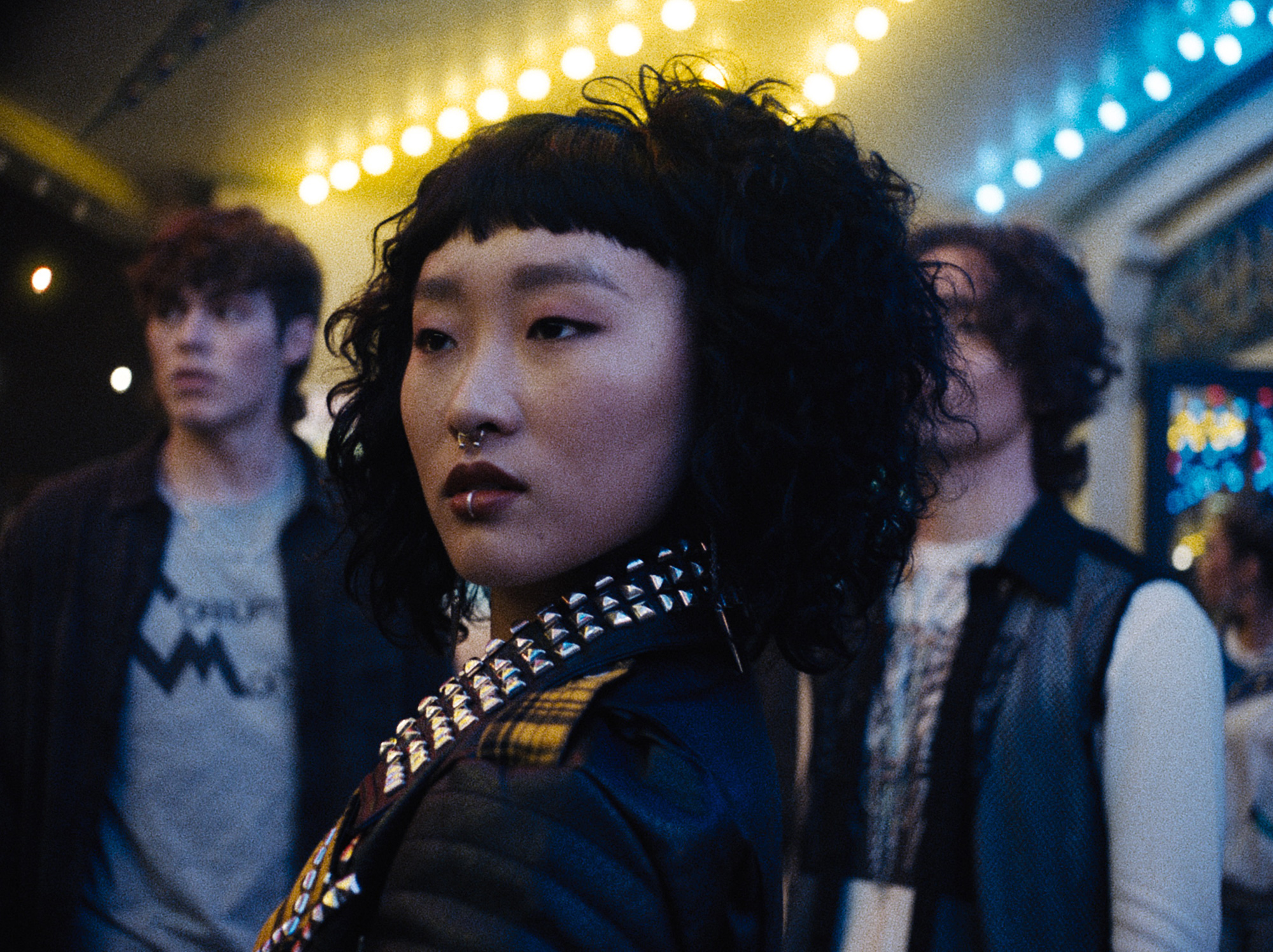
Bitch Fight
The character Tina can be seen wearing a T-shirt of this all-women punk band, which moved from Tuolumne to the Bay Area in 1987. Drummer Michelle Cruz Gonzales would later join Kamala & the Karnivores, drum for Spitboy and write a memoir.
Blue Velvet
Not so much a local reference, but filmmakers Ryan Fleck and Anna Boden like to honor this David Lynch classic by sneaking references to it in their films. It’s mentioned in passing in Freaky Tales twice.
Colonial Donuts
Seen on the clerk’s T-shirt in the video rental store, Colonial Donuts is an Oakland institution that abides by the three magic words: Open 24 Hours. With multiple locations, the beloved donut shop is just about the only thing “colonial” that Bay Area folks agree on.
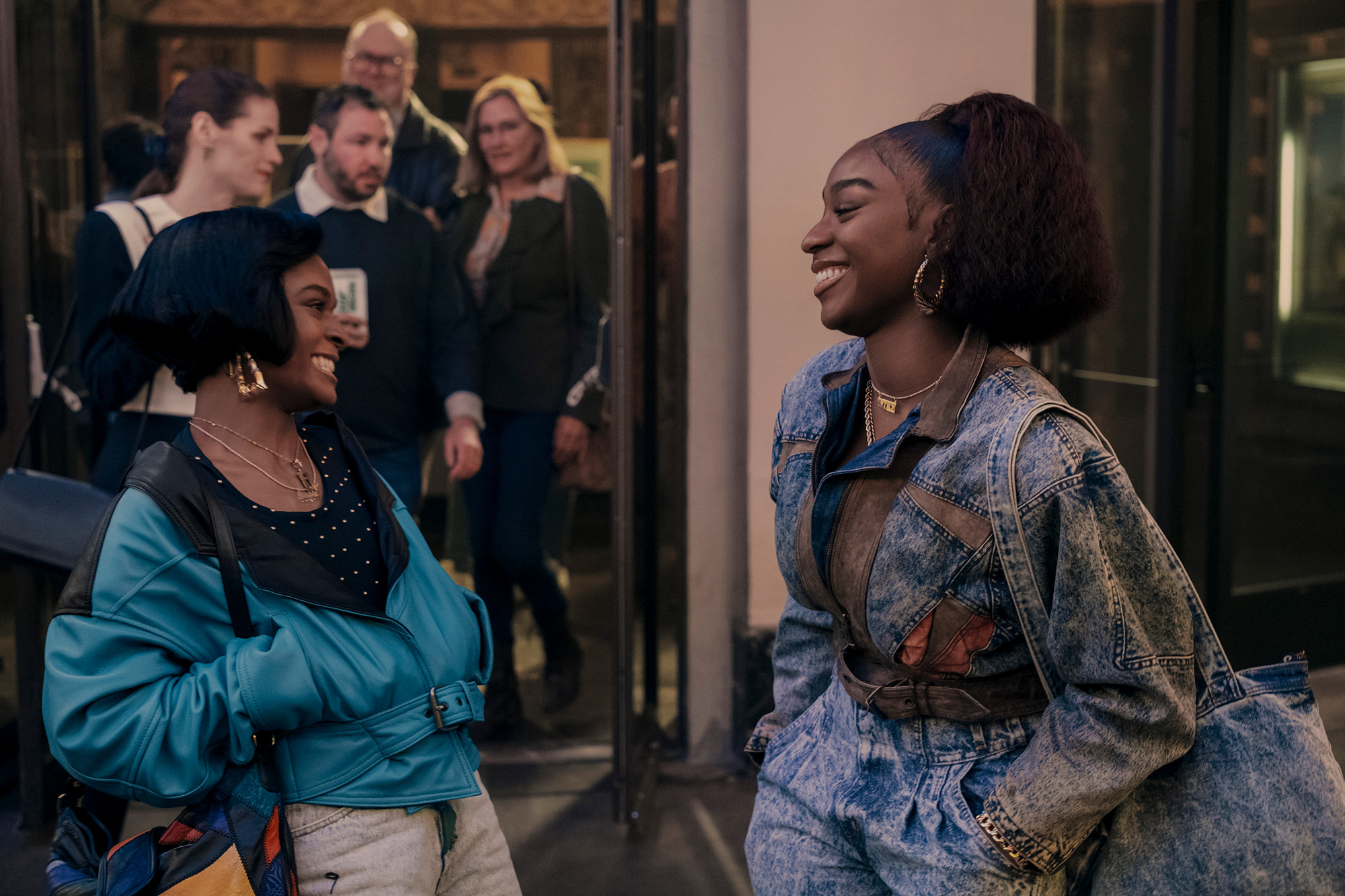
Danger Zone
The stars of Freaky Tales’ second chapter are Danger Zone, who perform “Don’t Fight the Feelin’” onstage with Too Short at Oakland hotspot Sweet Jimmie’s. The female rap duo of Barbie and Entice made their debut with “Jailbait,” a warning to underage girls about predatory men. Too Short then brought them in the studio for “Don’t Fight the Feelin’,” and history was made. Read the full backstory on Danger Zone here.
Dick’s Restaurant
A handful of scenes in Freaky Tales were filmed at this now-boarded up San Leandro diner and adjoining sports lounge, which originally opened in 1969. This is not the restaurant’s first starring role — it also provided the setting for Radiohead’s “High & Dry” U.S. music video.
The El Cerrito Hills
Where evil lives. In Freaky Tales, the house of the Nazis is also where multiple scenes take place with Angus Cloud, Oakland’s son, in his final role. In real life, the house where filming took place is in the hills of El Cerrito.
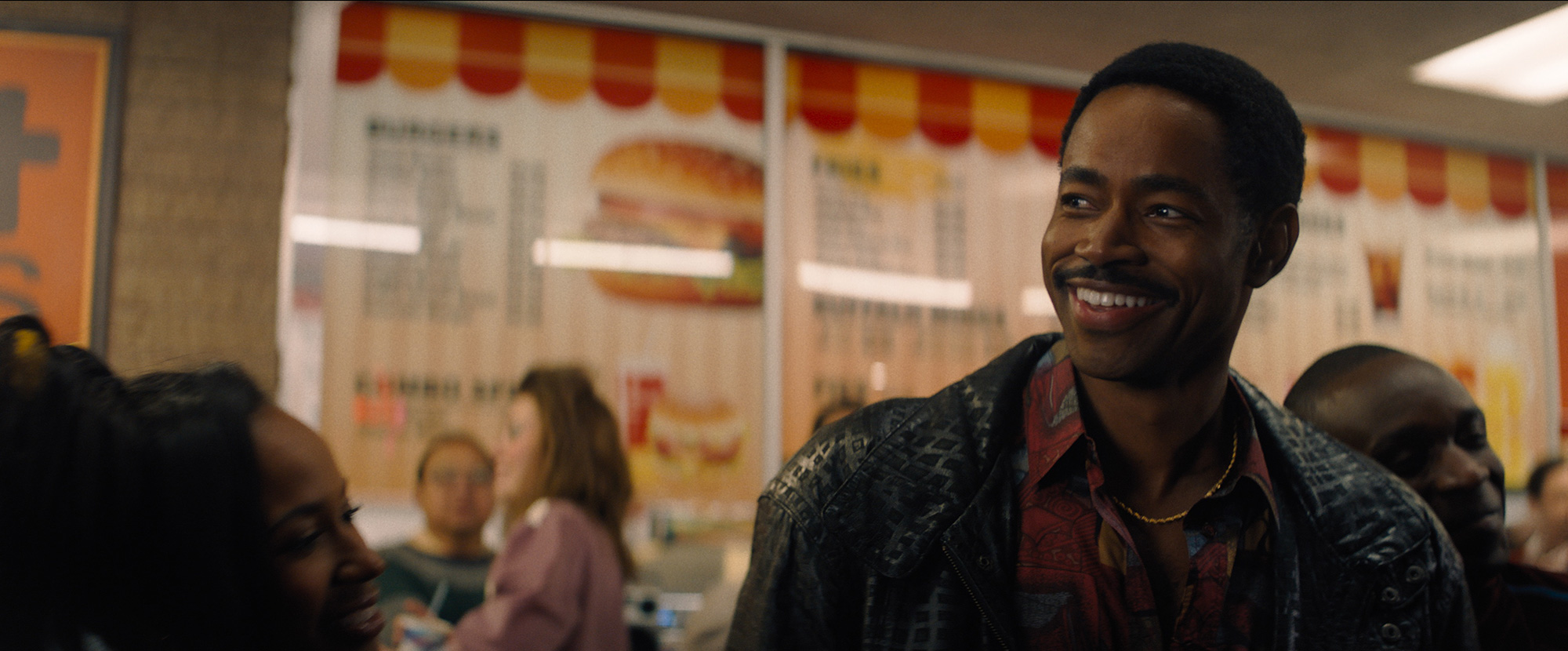
Sleepy Floyd
The Warriors point guard is played by Jay Ellis in Freaky Tales, but watch closely and you’ll see the real Sleepy Floyd make a cameo at a post-game hangout. (There’s a famous call by announcer Greg Papa that shows up later in the film, too.)
Freddy B
Too Short’s early rap partner is represented in Freaky Tales as the character “Lenny G.” The rapper Stunnaman02, who plays Lenny, says that he tried to find Freddy B to get pointers for the role, but was unsuccessful. Too Short and Freddy B last appeared together onstage in 2016, and according to reports, Freddy B is now a mission director at Mount Calvary Baptist Church in Fairfield.
1/4 lb. Giant Burger
This Oakland institution — the one at Dimond and Macarthur — provides the after-hours meetup spot where Sleepy Floyd celebrates his record-breaking playoff performance with fans. (Hanging out among the people after a game is a thing for pro athletes from the Town.)
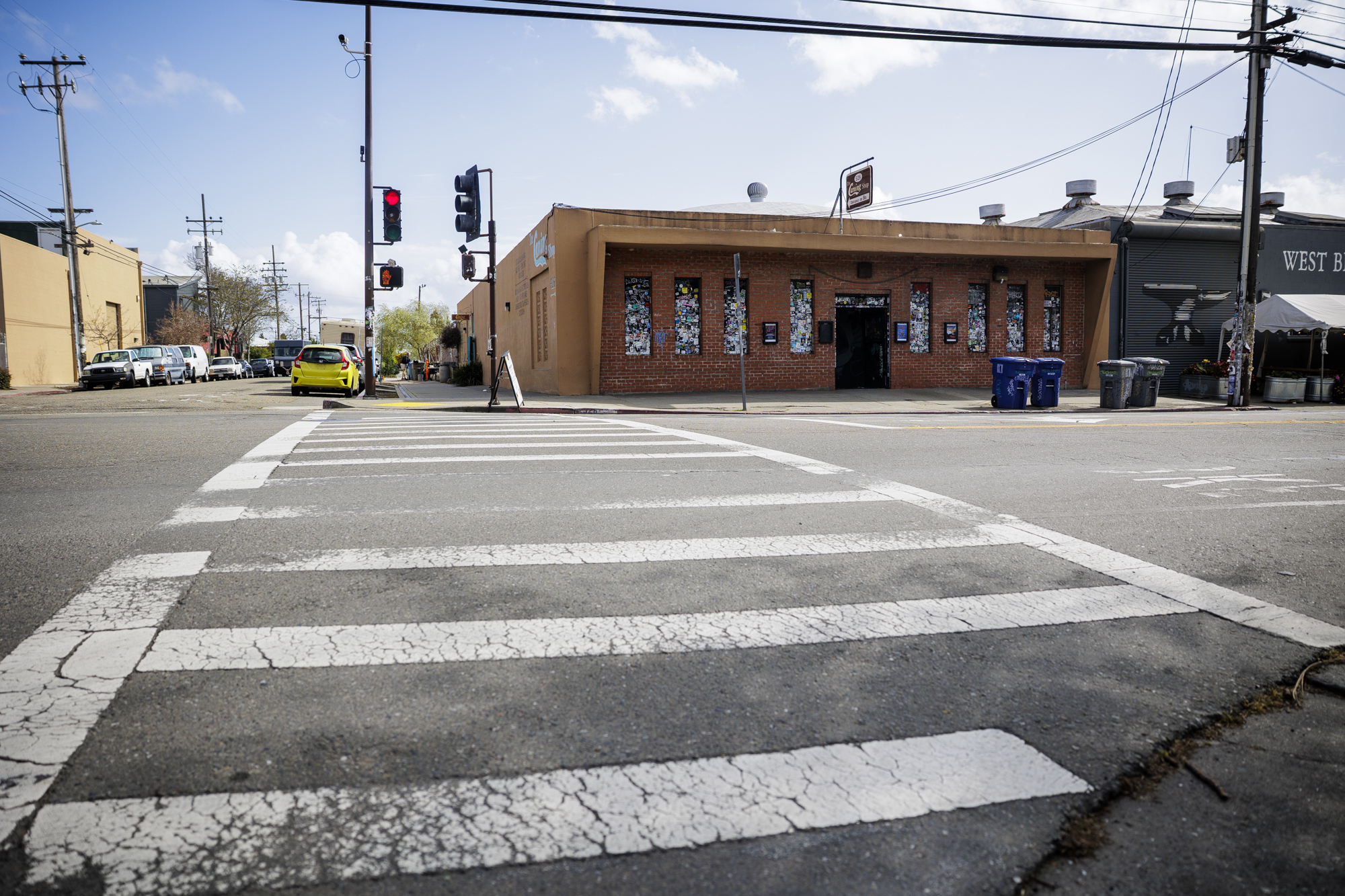
924 Gilman
The venerable all-ages, all-volunteer punk club in Berkeley is the star of Freaky Tales’ first chapter. And, because the filmmakers worked with Gilman volunteers past and present, they got a lot of details right: the basketball hoop, Big Wheels in the pit, the “Animal Liberation” graffiti, the “Meese is a Pig” poster. Gilman regulars like George Hated are portrayed in the film, and logos of bands like Soup, Christ on Parade, Crummy Musicians, MDC and Sewer Trout can be seen. They even got the toilet seat on the wall, and period-correct rules stenciled at the front door. The set re-creation of the club was filmed in a warehouse in East Oakland, not actually at Gilman — but the feeling is accurate, which is hard to do when depicting punk scenes in a Hollywood film. Read about the real-life Nazi beatdown at Gilman here.
Grand Lake Theatre
Seen in several scenes, with the marquee advertising 1987 films The Lost Boys and Elaine May’s famous flop Ishtar. Host to the local premiere in March of Freaky Tales, the Grand Lake needs no introduction — it’s part of every Oaklander’s formative memories and serves as one of the Bay’s last remaining movie palaces.
